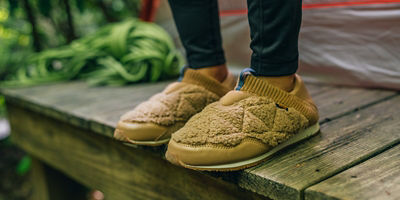
Camping knives come in all shapes, styles, and sizes, with thousands of different models on the market. That seemingly endless variety can make it tough to sift through all the options and zero in on what you actually need. Still, it’s worth doing a little legwork. A high-quality camping knife will not only be safer to use, but it’s also more likely to hold its edge, require less maintenance, and withstand the rigors of outdoor use for years to come.
Any knife you choose should be strong, durable and versatile—able to do everything from carving steaks off the grill to whittling stakes for your tent. It should also have the features you need for your preferred style of outdoor living, whether that be survivalist base-camping or ultralight backpacking.
Here are a few, ahem, pointers on picking the right blade.
Camping Knives 101
Many camping knives are designed first and foremost to help you cook, usually with a focus on cutting vegetables, fruits, meat, and other items. But they can also be used for camp chores like cutting cord, spreading peanut butter, trimming gear patches, or cleaning fish. Sturdier fixed-blade knives are also handy for heavy-duty chores like splitting wood. Your knife’s potential uses will depend on its materials and construction style.
Materials
The most common metal used in camping knives is stainless steel—a metal alloy made of at least 11% chromium, iron, nickel, molybdenum, and sometimes carbon. Stainless is a great option for its durability and resistance to rust and corrosion.
Carbon steel and ceramic blades, used in many hunting and survival knives, can be sharper, but carbon steel’s lack of chromium makes it more susceptible to rust and corrosion. Ceramic blades are rust-resistant and hold their edge longer, but they can be difficult to sharpen on your own.
Titanium is another strong material that’s more rust-resistant than carbon steel. While backpackers prize titanium for its light weight, many knife veterans prefer a tool with a heavier feel. Titanium is also a tad softer and not as sharp as steel. For that reason, titanium blades are often coated with another material. Most titanium camping knives only feature a titanium handle; the actual blade is generally steel.
Fixed vs. Folding
Fixed-blade knives are more common among survival and bushcraft enthusiasts, hunters, and wilderness campers. Unlike most pocket knives and switch-blades, the metal portion of a fixed-blade knife is embedded directly into the handle, providing enough strength for heavy-duty use. Because there are no joints, hinges, or springs, fixed-blade knives are also much harder to break than folding knives. They’re also easy to clean and sharpen.
Most campers find that fixed-blade knives result in fewer injuries than folding knives, since there’s no danger of slipping while fiddling with the opening or closing mechanism. Just make sure your knife has a sheath and keep it on whenever the knife is not in use. Also ensure the handle has an ergonomic and secure grip.
Folding knives are generally less sturdy than fixed blades, but they’re lighter-weight and take up less room in a pack. That makes them better for most human-powered transport, including hiking, backpacking, or backcountry skiing. Because they fold up when not in use, they’re also safer to travel with—even if they’re not necessarily safer to use.
The downside is that their moving mechanisms can get dirty and capture moisture. They’re also harder to clean than fixed blades. Folding knives cannot be used for survivalist tasks like building shelter or splitting wood because they tend to be smaller and easier to break.
Multi-tools
While you can probably trim your nails, open a beer, and tighten ski-boot bindings with just a knife, it can be easier (and safer) to use purpose-made tools for certain tasks. Enter the Swiss Army Knife and its brethren, a category of camping tools known as “utility knives” or “multi-tools.” While there are a variety of options on the market, most have a few common components and perform a variety of different tasks well. Popular features include:
- Multiple knife blades
- Saw blade
- Screw drivers (flathead and Phillips)
- Scissors
- Awl
- Can opener or bottle opener
- Pliers
- Scissors
Note that not all multi-tools are created equal. If you know you need a wrench or Allen key for your skiing, bike or climbing gear, make sure your multi-tool has one (and in the right size). If you love having a tiny pair of scissors to cut out gear patches or trim your nails, prioritize finding a multi-tool with that feature.
Also keep in mind that more features are not necessarily better. A multi-tool cluttered with lots of things you don’t need can be difficult and frustrating to use. Plus, all that weight adds up—and no one wants to carry a half-pound of metal in their pack unless they plan to use it.














